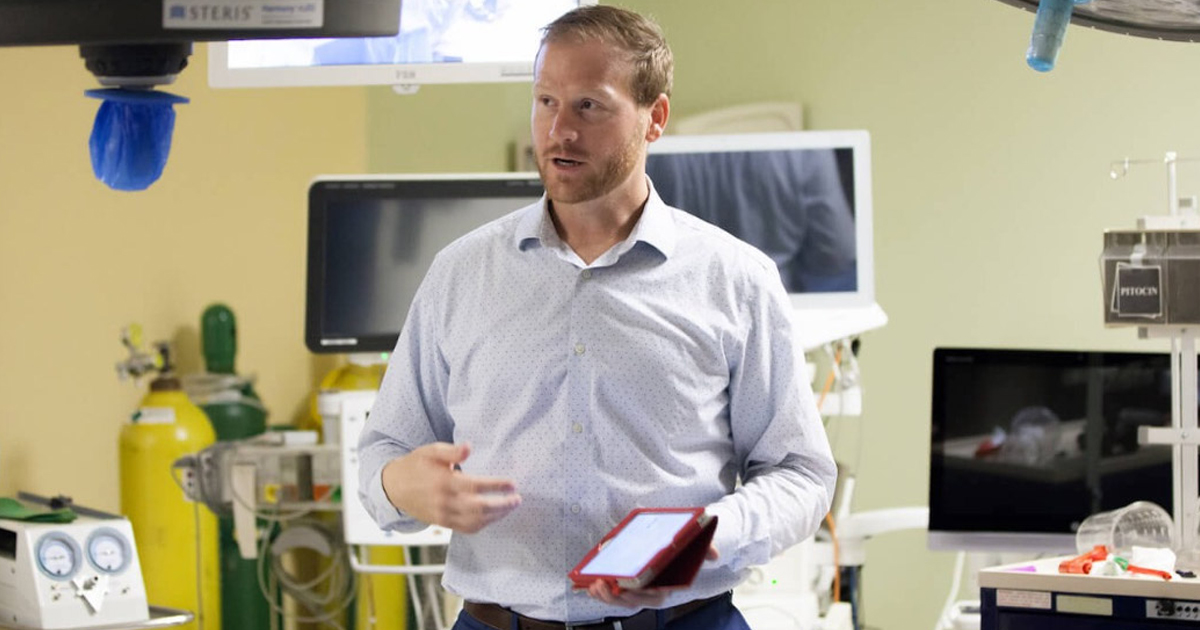After nearly seven years as Kaiser Permanente’s National Senior Director for Nursing Innovation and Leadership, I’m joining Trusted Health as the Head of Clinical Innovation. Some people think I’m crazy for leaving a $70 billion company and one of the biggest names in healthcare to join a start-up, but, in reality, it was an easy choice. Why? The single thread running through each of the roles I have taken on has been the same: a chance to be a part of disruptive change to the nursing profession.
The healthcare system in the United States is being completely transformed under our noses. It's hard to see day-to-day, but Amazon, Google, CVS, and Walmart are all quietly building things that will change the entire landscape of care. The problem is that legacy healthcare systems are not keeping up. Sure, more telehealth apps and wearables have been introduced, but there are very few examples of any legacy system really transforming itself. This includes legacy staffing companies. The way the healthcare industry manages its workforce is simply archaic. Healthcare professionals are burning out at an alarming rate, suicide among nurses is growing, staffing models are broken, and to top it all off… we have a nursing shortage in many states (and distribution problem across them).
The Future of Healthcare
There are three fundamental principles that are pulling healthcare and nursing into the future:
- Everyday life is the new care setting
- Teams are linked to people and populations, not hospitals or other care facilities
- Personal health is (or can be) enabled by technology
Each of these factors is driven by the changing needs of both consumers and nurses. Individuals seeking healthcare want the same convenience, transparency, and access that they experience while shopping on Amazon, watching Netflix, or browsing social media. The legacy systems have failed to meet these evolving needs in a meaningful way, and thus consumers, students, tech giants, and others have seized the opportunity to apply their innovation and skill set to healthcare. Case in point: in 2018 alone over $20 billion dollars was invested in healthcare start-ups.
The number one issue that demands the most time from health system leaders, and is also the largest cost to hospitals, is staffing. Nurses are frustrated with the staffing process, hospitals struggle with the cost, and the solutions to fix it have involved inflexible contingent workforce contracts, massive phone campaigns to beg people to fill open shifts, and a misguided attempt to retain nurses in a single unit instead of flexing to meet care demand.
Healthcare doesn’t simply need incremental changes from industry leaders. It needs a complete overhaul in the same way that Lyft and Uber transformed transportation, Facebook transformed media, Airbnb transformed tourism, and Amazon transformed retail. This is at the core of why I have joined Trusted Health to build a new category of industry… one for the modern nurse.
Why Trusted Health and Why Now?
I am an emergency and trauma nurse at heart. I worked clinically at both UCLA and Scottsdale Healthcare, both level one trauma centers, and loved every minute of it. I’ve also published three books on how to lead healthcare innovation, nursing innovation, and evidence-based practice. One of my books, Leadership for Evidence-Based Innovation in Nursing and Health Professions, has been adopted by more than 800 university classes as required reading and was just released in its Second Edition. Its First Edition was awarded third place in the leadership category for the book of the year by the prestigious American Journal of Nursing.
I have helped design and build simulation training centers at Arizona State, The Ohio State University, and the new Kaiser Permanente School of Medicine. I have led continuing education programs in large colleges of nursing and served as a system director for nursing education redesign, where I restructured eight days of lectures into three days of hands-on learning. For the past 6.5 years, I have been leading technology-focused nursing innovation at one of the largest health systems in the country. I helped build a new medical school from the ground up, led nursing-focused technology development in a brand-new hospital construction project, and facilitated the redesign of a national nursing strategy that spanned nearly 60,000 nurses.
This path has continually brought me back to one central question: how can we improve nursing work?
Cue Trusted Health.
What if nurses were matched, through novel technology to roles that aligned by their passion, competency, skill set, and career goals to the patient needs, care issues, and system-level demands? What if permanent, contingent, travel, per diem, and float staff were coordinated seamlessly to ensure all shifts were filled while ensuring that patients received the right care, from the right person, with the right skill set?
Oh… and what if we could match the above clinicians’ passions with their career aspirations? Imagine the reduction in burnout, in error, in frustration from nurses, patients, and the entire healthcare system!
This is the “makeover” that nursing and the healthcare workforce need. We need to stop settling for what's given and start building what we desire. This is what Trusted Health is building, and why I'm joining the team: to fundamentally change nursing and the healthcare workforce. In my new role, I will be working to change the conversation around innovation in the healthcare workforce, supporting product design, and building the capacity for innovation at Trusted Health to better serve all of the nurses we work with. Join us.
About the Author
Dr. Dan Weberg is the Head of Clinical Innovation at Trusted Health. He is a nurse leader and expert in human-centered patient design and simulation and healthcare innovation with extensive clinical experience in the emergency department, acute in-patient hospital settings, and academia over the past 13 years.
